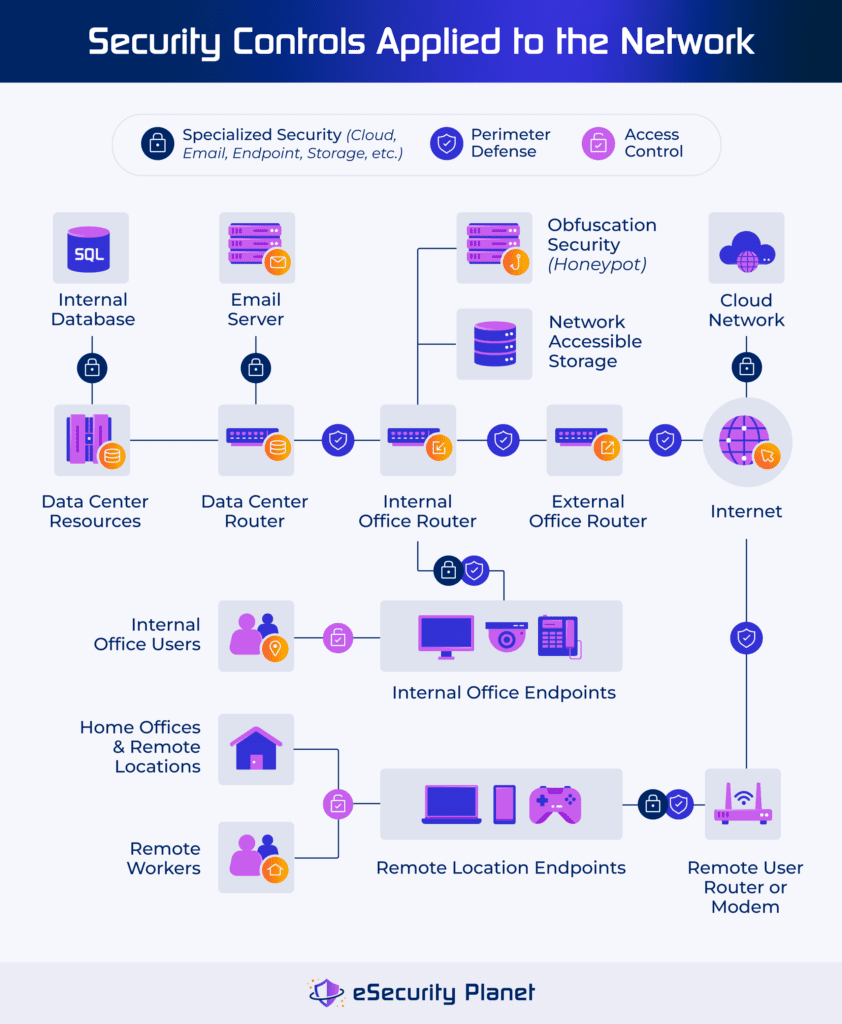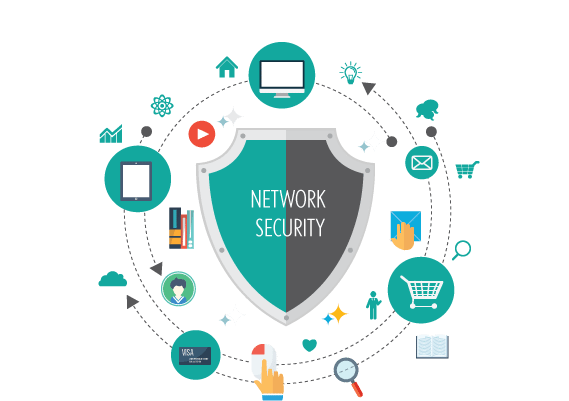FFT Pipeline Protection: Advanced Technologies to Safeguard Your Pipeline Infrastructure
The Vital Duty of Information and Network Safety And Security in Shielding Your Details
In a period where data breaches and cyber risks are increasingly prevalent, the relevance of robust data and network safety can not be overemphasized. Organizations must not only secure delicate info however also guarantee compliance with advancing regulative criteria. The implementation of effective safety actions, such as file encryption and access controls, is important to keeping trust and operational integrity. Nevertheless, the landscape of cyber threats is continuously moving, questioning concerning the competence of existing methods and what new strategies may be necessary to stay in advance of prospective threats. What lies ahead in this complicated safety and security environment?
Understanding Information Safety
In today's digital landscape, an overwhelming majority of companies grapple with the intricacies of data safety. This crucial part of info technology entails safeguarding delicate information from unauthorized accessibility, corruption, or theft throughout its lifecycle. Information security encompasses various methods and technologies, consisting of security, gain access to controls, and information masking, all aimed at securing information against violations and vulnerabilities.
An essential aspect of information safety and security is the recognition and classification of data based upon its sensitivity and significance. This category aids organizations prioritize their safety and security initiatives, allocating resources to safeguard one of the most crucial info effectively. Executing durable plans and treatments is vital to ensure that workers comprehend their function in keeping information protection.
Normal audits and assessments aid in determining possible weak points within a company's data protection structure. Furthermore, staff member training is crucial, as human mistake remains a substantial consider information breaches. By fostering a society of safety and security understanding, organizations can alleviate dangers linked with expert hazards and negligence.
Relevance of Network Protection
Network safety stands as a foundation of an organization's overall cybersecurity strategy, with approximately 90% of services experiencing some form of cyber threat in current years. The value of network safety hinges on its capacity to shield delicate information and keep the stability of service operations. By guarding network frameworks, organizations can avoid unapproved accessibility, data breaches, and various other destructive activities that could threaten their properties and online reputation.
Carrying out durable network safety and security measures not just assists in mitigating dangers but additionally cultivates trust fund among clients and stakeholders. When consumers are ensured that their financial and personal information is safe and secure, they are more most likely to involve with the organization, resulting in improved customer loyalty and service development.
Furthermore, a well-structured network protection framework promotes compliance with different regulatory demands. Organizations has to comply with sector criteria and legal mandates worrying information protection, and effective network safety techniques can guarantee conformity, thereby preventing prospective fines.

Usual Cyber Dangers
Organizations should continue to be vigilant versus a range of cyber risks that can weaken their network safety and security initiatives. Among the most usual dangers is malware, which encompasses viruses, worms, and ransomware that can interfere with operations, swipe data, or hold details captive. Phishing strikes, where malicious actors pose trusted entities to trick people right into revealing delicate info, remain to grow in sophistication, making individual education critical.
One more widespread risk is dispersed denial-of-service (DDoS) attacks, which overload systems with web traffic, providing them not available to reputable users. Expert threats, whether deliberate or accidental, pose considerable threats as employees may accidentally expose delicate data or purposefully exploit their gain access to for harmful objectives.
Furthermore, vulnerabilities in software program and equipment can be made use of by cybercriminals, highlighting the importance of normal updates and patch monitoring. Social engineering techniques even more make complex the landscape, as attackers control people into divulging secret information via emotional manipulation.
As these hazards progress, organizations need to maintain an aggressive method to recognize, alleviate, and react properly to the ever-changing cyber risk landscape, protecting their valuable information and keeping depend on with stakeholders. fft pipeline protection.
Ideal Practices for Security
Implementing robust protection actions is important for securing sensitive info and maintaining operational integrity. Organizations needs to begin by carrying out comprehensive threat analyses to determine vulnerabilities within their systems. This aggressive approach enables the prioritization of security efforts customized to the details needs of the organization.
Taking on solid password plans is crucial; passwords need to be complicated, consistently changed, and took care of making use of protected password monitoring tools. Multi-factor authentication (MFA) adds an additional layer of protection by requiring added confirmation approaches, hence lowering the threat of unauthorized accessibility.
Routine software updates and patch management are crucial to shield against recognized susceptabilities. Executing firewall programs and breach discovery systems can even more protect networks from outside hazards. Staff member training is equally crucial; team should be educated on acknowledging phishing attempts and comprehending the value of data safety and security protocols.
Data security must be utilized for delicate information, both at rest and in transportation, to make sure that also if information is intercepted, it stays inaccessible (fft pipeline protection). Companies must develop and frequently test case reaction website here intends to make sure speedy activity in the event of a safety violation. By sticking to these ideal practices, companies can boost their protection posture and shield their essential data properties
Future Trends in Protection
The landscape of information and network safety is continuously progressing, driven by improvements in technology and the increasing refinement of cyber dangers. As organizations increasingly take on cloud computing and IoT devices, the paradigm of protection will certainly change towards a zero-trust version. This method highlights that no entity-- outside or interior-- is inherently relied on, mandating confirmation at every access point.
Additionally, the use of synthetic knowledge and equipment discovering in safety methods is on the rise. These technologies make it possible for predictive analytics, allowing companies to determine vulnerabilities and possible risks prior to they can be made use of. Automation will likely play a critical role in streamlining security feedbacks, decreasing the time required to mitigate violations.
Furthermore, regulatory structures will certainly remain to tighten, demanding a lot more rigorous conformity steps. Organizations should remain abreast of progressing laws to guarantee they satisfy safety standards.

Verdict
Finally, the significance of data and network protection can not be overemphasized in the contemporary digital landscape. With the frequency of cyber hazards and the boosting complexity of regulatory requirements, companies need to embrace comprehensive security measures to shield delicate info. By staying and applying efficient techniques educated concerning emerging fads, organizations can enhance their durability versus possible assaults, guaranteeing data stability and fostering trust fund amongst stakeholders and customers. Prioritizing safety and security remains important for functional connection and long-term success.
In a period where information breaches and image source cyber risks are progressively widespread, the significance of durable information and network protection can not be overemphasized. Data safety and security includes different approaches and modern technologies, including encryption, gain access to controls, and information masking, all intended at guarding information against violations and susceptabilities.
A basic facet of information protection is the recognition and category of information based on its level of sensitivity and relevance.The landscape of information and network safety and security is constantly developing, driven by improvements in innovation and this page the boosting elegance of cyber risks.In final thought, the importance of data and network security can not be overemphasized in the modern electronic landscape.